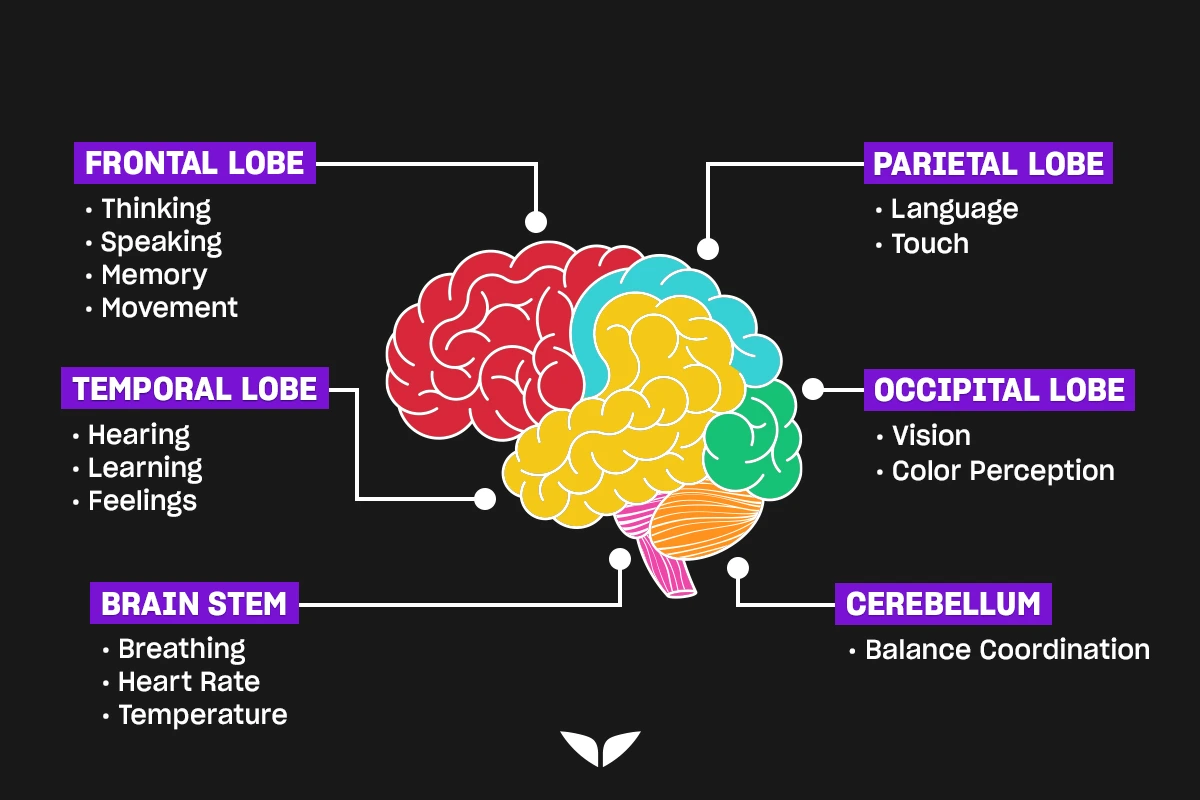With more than 86 billion functional neurons, the brain is the most complex organ in the human body that deals with thinking. It controls everything it does and thinks.
In other words, it’s the “boss of your body.” So, many people wonder, “What part of the brain controls thinking?”
The thing is, this particular organ plays such a crucial role in our whole system. It develops functions for the five senses: sight, sound, touch, taste, and hearing. And it helps primary functions such as breathing, talking, storing memories, and thinking.
It’s our most precious gift, according to Jim Kwik, international brain coach and trainer of Mindvalley’s Superbrain program. Why? Simply because it’s what “allows us to learn, love, think, create, and even to experience joy.”
Not only that, it’s “the gateway to our emotions, to our capacity for deeply experiencing life, to our ability to have lasting intimacy,” as well as helping us innovate, grow, and accomplish.
Which part of the brain controls thinking?
The brain consists of three main parts:
- The cerebrum. It’s the outer part of the brain, which consists of the frontal, parietal, temporal, and occipital lobes.
- The cerebellum. It’s located at the bottom of the brain, near the back of your head.
- The brain stem. This third part is located beneath the cerebrum and in front of the cerebellum in the brain stem.

These three parts control processes in the body, including movement, memory, and thinking.
The role of the cerebrum
The cerebrum makes up more than 85% of the brain’s weight. It’s the part of the brain that controls daily activities such as reading, learning, and speech. It also assists planned muscle movements such as walking, running, and body movement.
The cerebrum is the thinking part of the brain. It helps you play chess, solve a crossword puzzle, or figure out your next move in a complex video game.
The cerebrum has two hemispheres—the left hemisphere and the right hemisphere. Each hemisphere controls the opposite side of the body.
The two hemispheres have four sections called lobes—frontal, parietal, occipital, and temporal. Each of these lobes controls specific aspects of the thinking process.
The role of the cerebellum
If the brain is a super-efficient, bustling office complex, the cerebellum is the office’s facilities manager, maintaining the heartbeat of operations.
It works behind the scenes, taking care of fine motor movements, balance, and coordination. You know, the day-to-day tasks, like making sure you can navigate through your house without bumping into furniture or helping you catch a football mid-air on a Sunday afternoon.
Although it isn’t directly involved in thinking, the cerebellum plays an important role in this process. This part of the brain takes up to 10% of its total volume yet contains more than half of all the neurons in the brain.
Scientists have discovered that the “unconscious” cerebellum interacts with the “conscious” cerebrum to perform functions. The cerebellum carries out planned muscle movements such as running and jumping. That’s why sometimes scientists call it the “thinking cerebellum.”
Research nowadays suggests that the cerebellum is a key player in predicting our emotional reactions. The study found that “the cerebellum, which was initially considered to be mainly involved in motor coordination and execution, is now recognized as an associative center for higher cognitive and emotional functions even in the developing brain.”
The brainstem
Tucked away at the base of our brain is the brainstem. It connects the brain to the spinal cord and holds the reins of many automatic, essential bodily functions.
Here’s one way to look at it: Imagine your body as a busy city. The brainstem, then, would be akin to its efficient and diligent city hall, managing essential services like heart rate, breathing, and blood pressure.
These are our body’s critical life-support systems, running constantly in the background, much like a city’s water and power supply.
The brainstem also acts as a vital communication highway, ferrying messages between the brain and the rest of the body. It’s a bit like the city’s central post office, handling the constant flow of information to and from various parts of the body.
Within its compact structure, the brainstem houses numerous nuclei involved in different functions and relaying sensory information. It’s also where cranial nerves originate, controlling functions from eye movement to facial sensations and movements.
Other parts of the brain related to the ability to think
Different brain activities are linked to different brain regions. Here are a few of the main ones explained:
Which part of the brain controls critical thinking?
When it comes to which part of the brain controls critical thinking and intelligence, we have to consider that the prefrontal cortex, anterior cingulate cortex, and parietal lobe work together like a highly trained Olympic relay team.
Each player has its own role: the prefrontal cortex in decision-making, the anterior cingulate cortex in conflict detection, and the parietal lobe in information processing. Understanding this synchrony can unlock our true critical thinking potential.
Which part of the brain controls memory?
When it comes to the art of memory, we turn our attention to the hippocampus.
Nestled deep within the brain, this small region takes on the monumental task of memory formation and recall. It stores information on past experiences and opens up the space to create new ones.
Learn more: What part of the brain controls memory?
Which part of the brain controls breathing?
Breathe in, breathe out—a simple act that sustains life and is meticulously regulated by the medulla oblongata in our brainstem.
This unsung hero of our nervous system ensures the continuity of this essential function, similar to the ceaseless rhythm of the ocean tides. Acknowledging its role can help us appreciate the fascinating intricacies of our bodies.
Learn more: What part of the brain controls breathing?
Which part of the brain deals with emotions?
Now, you know which parts of the brain control thinking and memory. But what about our emotions?
All positive and negative emotions and spontaneous feelings, from excitement to sadness, are processed in the limbic system. This system controls your emotions and interacts with other parts of the brain.
At the same time, another part of the brain called the amygdala handles emotional reactions such as love, hate, and sexual desire.
Learn more: What part of the brain controls emotions?

Unleash your superbrain
With centuries of research, the human brain remains the biggest mystery in the world. It is the most complex part of the body and controls movement, sight, and thinking. And of course, it’s the part of our system that’s most closely related to our minds.
And as Jim says, “We need to understand how our minds work so we can work our minds better.”
If you need some guidance to start unlocking your superbrain and mind, Mindvalley is the place to be. With transformational programs such as Superbrain, guided by Jim Kwik, you’ll master your mind’s functions in no time. And you can embark on a journey of:
- Techniques for supercharging your memory, focus, and learning capacity
- The most beneficial brain diet
- How to clear your mind of unwanted thoughts
- How to transform the way your brain is wired
- Achieving top performance when learning
By unlocking your free access, you can sample classes from this program and many others. All you have to do is open your mind to your greatest potential. And don’t be afraid to take the first step.
Welcome in.









